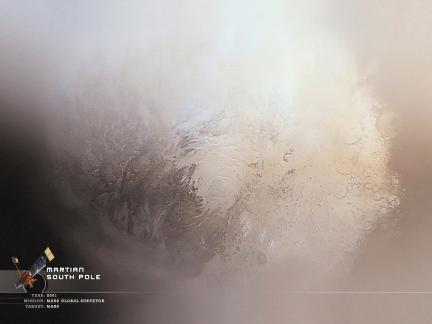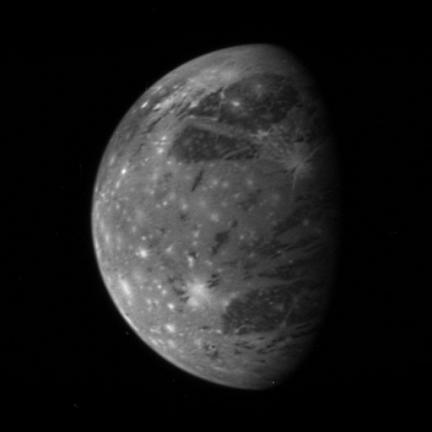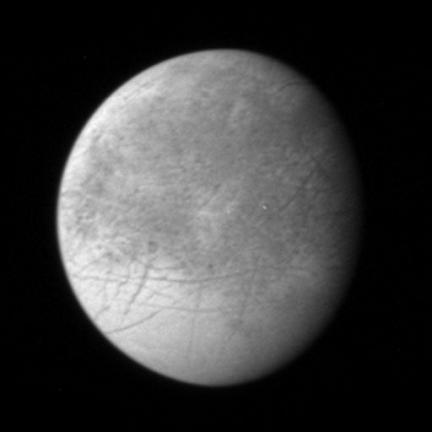Citizen scientist Björn Jónsson processed the image to enhance the color and contrast.
Cyber Tuesday Spaceprobe Deal
 For two days only, buy one of our limited edition Robotic Spacecraft Series Prints and get the full suite of vinyl stickers for free. This is a total savings of $24 and would serve as a great stocking stuffer to follow the presentation of the print.
For two days only, buy one of our limited edition Robotic Spacecraft Series Prints and get the full suite of vinyl stickers for free. This is a total savings of $24 and would serve as a great stocking stuffer to follow the presentation of the print.
Historic Robotic Spacecraft Poster Survey
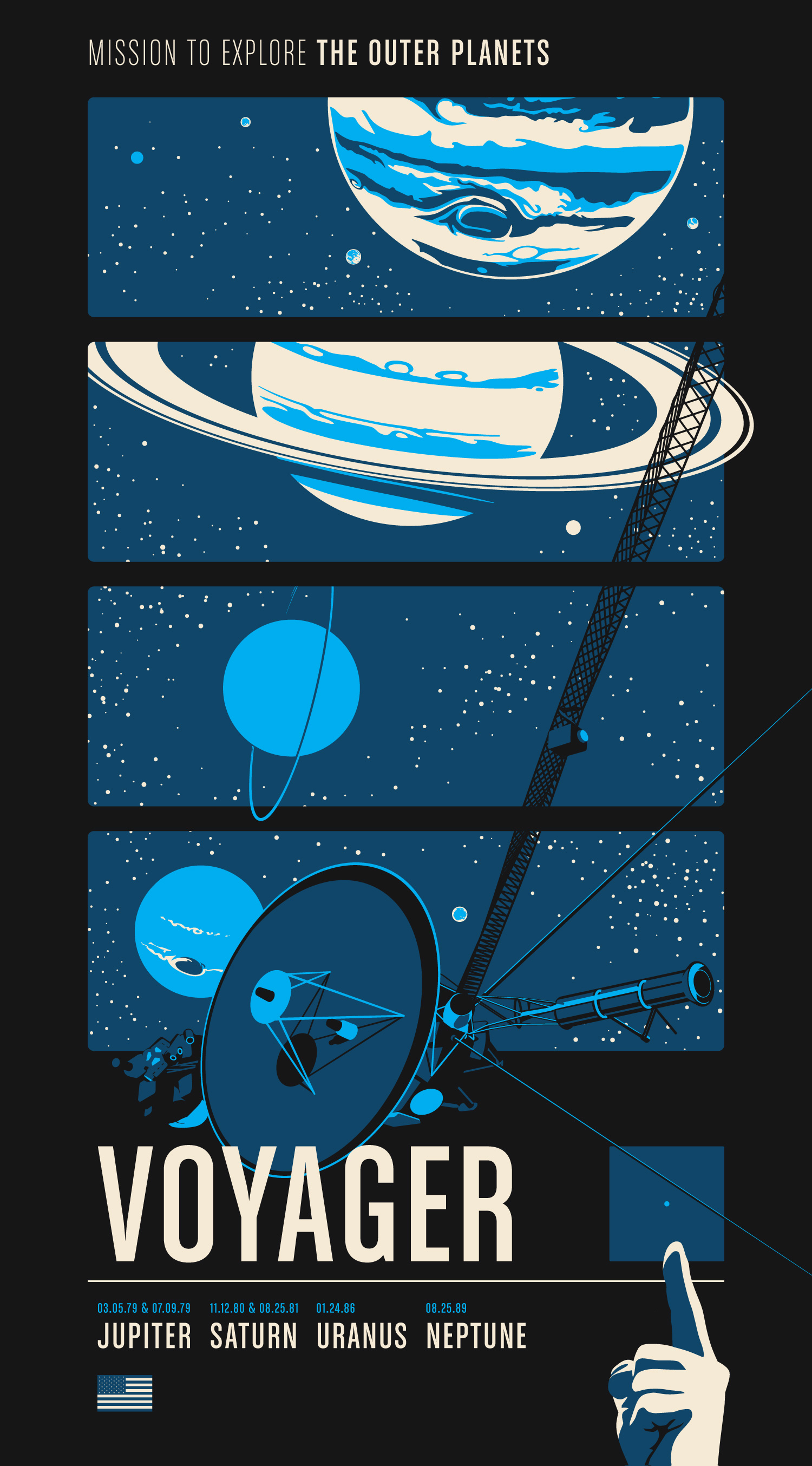 Our new Kickstarter project proposes the creation of three screen-printed posters celebrating the most popular and notable interplanetary robotic space missions in history. Going into this, we knew that poster #1 had to go to the hugely popular Voyager missions (shown above). However, we need your help selecting the themes of posters #2 and #3. So head over to The Planetary Society now to vote on your three favorite missions, but do it by the 19th to have it count for the poster selection. If this goes better than expected we could even wind up designing a fourth or fifth.
Our new Kickstarter project proposes the creation of three screen-printed posters celebrating the most popular and notable interplanetary robotic space missions in history. Going into this, we knew that poster #1 had to go to the hugely popular Voyager missions (shown above). However, we need your help selecting the themes of posters #2 and #3. So head over to The Planetary Society now to vote on your three favorite missions, but do it by the 19th to have it count for the poster selection. If this goes better than expected we could even wind up designing a fourth or fifth.
Bjorn Jonsson’s Massive Voyager Composite
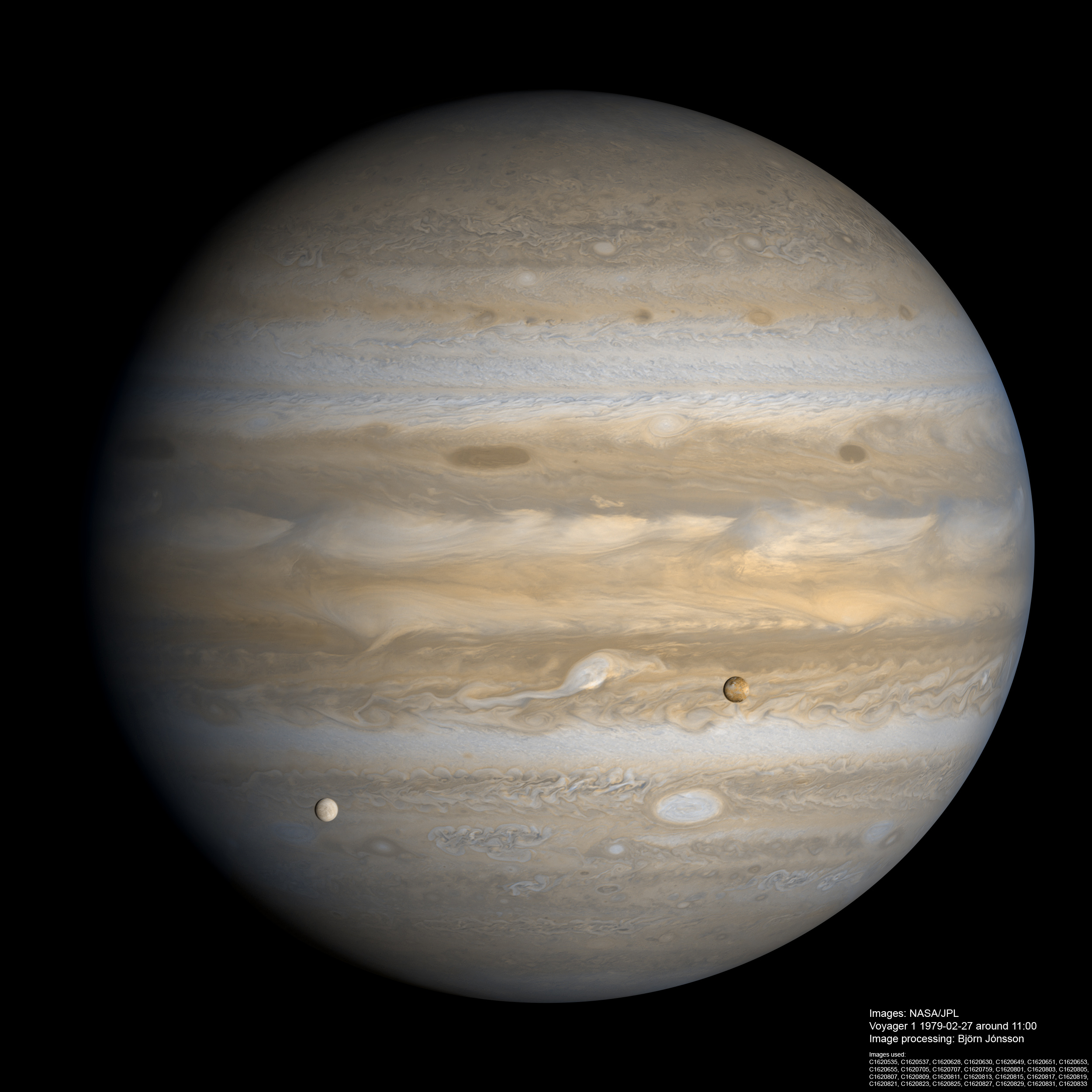 Stunning hi-res composite of Io and Europa transiting the mighty disc of Jupiter. Three of the most fascinating bodies in the solar system in one highly detailed image. You MUST click on the full resolution to see the details that are even apparent on the moons.
Stunning hi-res composite of Io and Europa transiting the mighty disc of Jupiter. Three of the most fascinating bodies in the solar system in one highly detailed image. You MUST click on the full resolution to see the details that are even apparent on the moons.
Created by Bjorn Jonsson.
Film: Europa Report
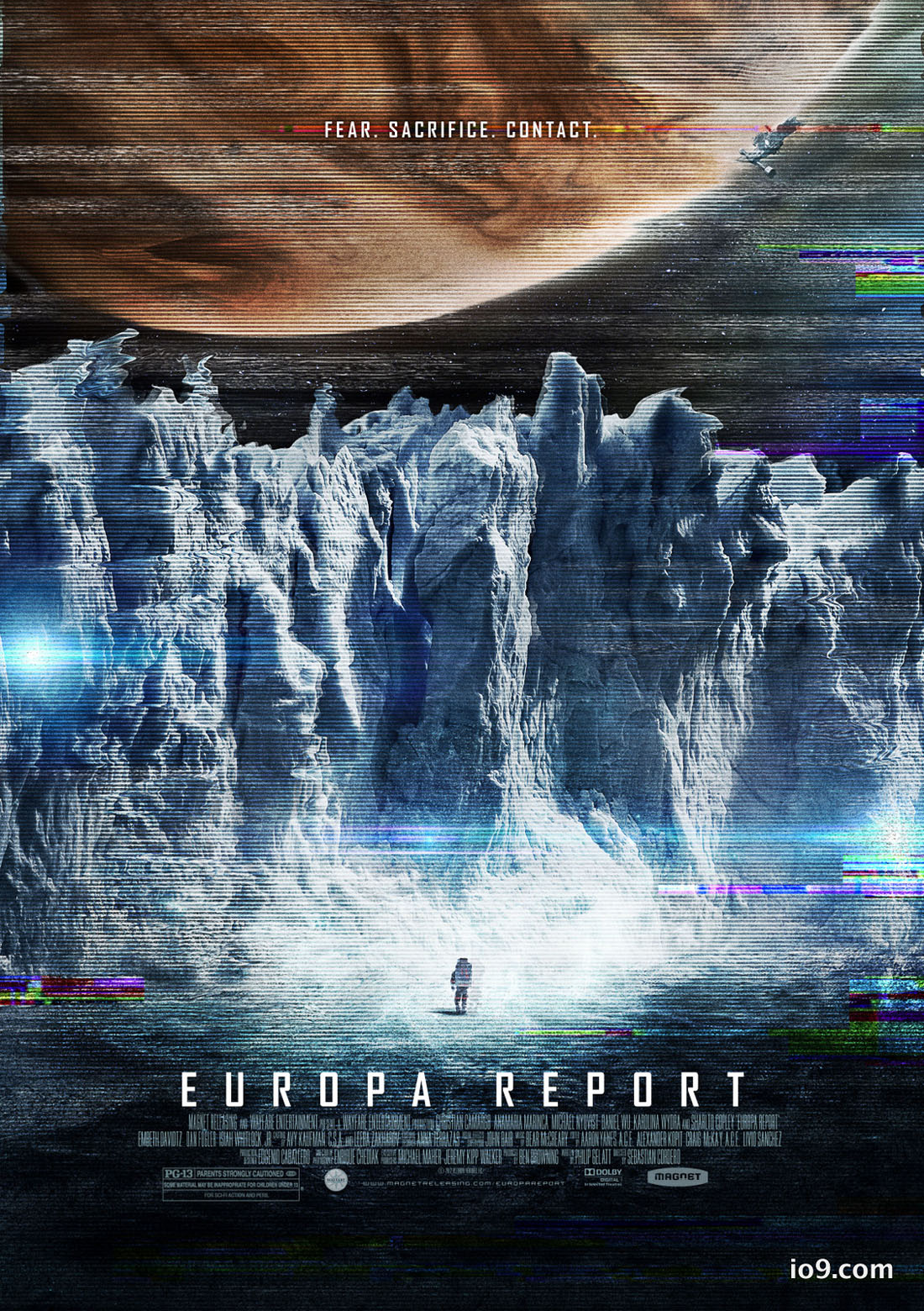 How did I miss this? Europa Report is based upon a future manned mission to Jupiter’s moon Europa. It was developed with mission specialists from NASA — so the details and events depicted are presented in more sciFiFact than in the traditional Hollywood SciFi. Sounds pretty incredible for lovers of real space exploration.
How did I miss this? Europa Report is based upon a future manned mission to Jupiter’s moon Europa. It was developed with mission specialists from NASA — so the details and events depicted are presented in more sciFiFact than in the traditional Hollywood SciFi. Sounds pretty incredible for lovers of real space exploration.
You Are the Center of the Solar System
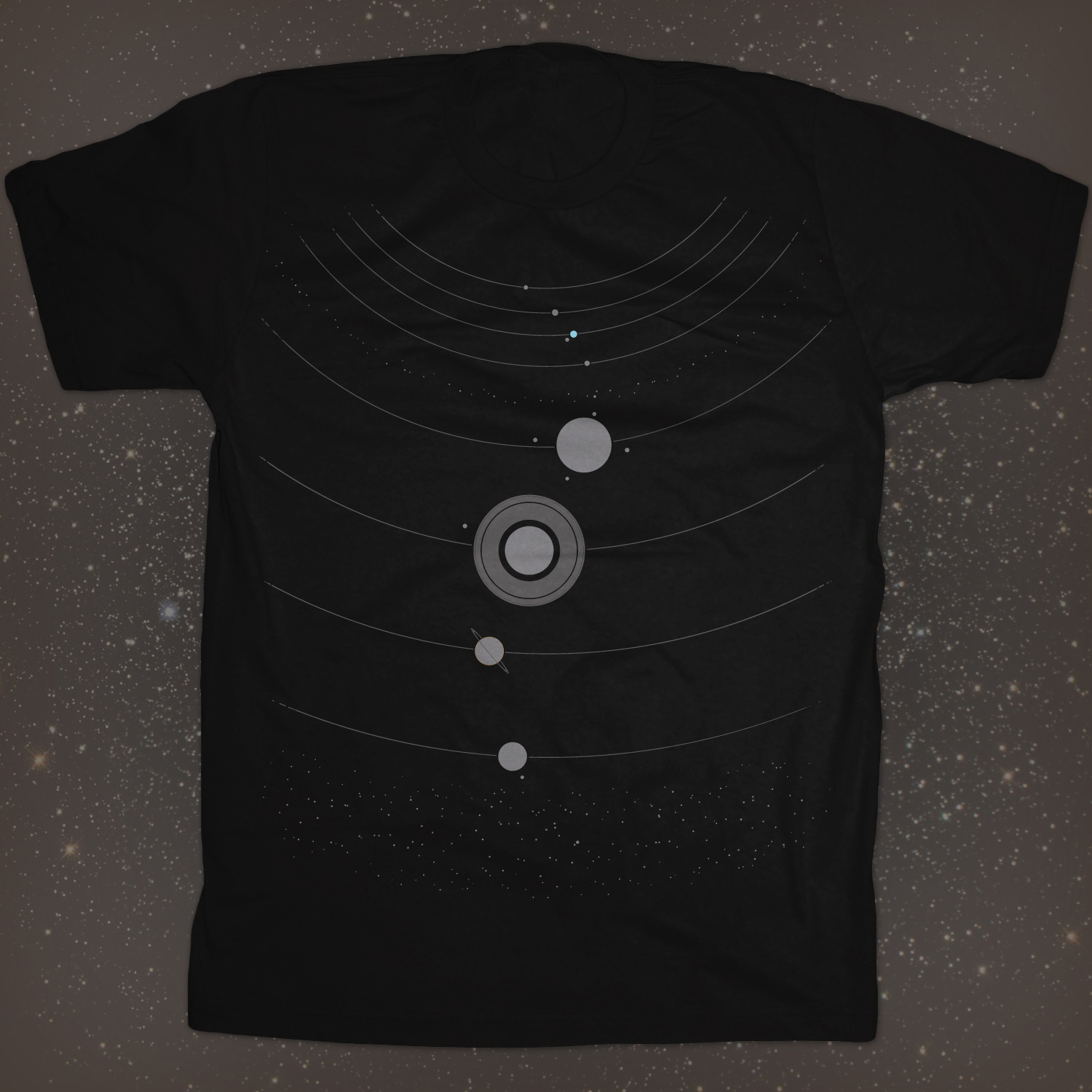 You Are The Sun is the latest space themed tee by Chop Shop Store. Following on iconic tees that collected various deep space missions and historic Earth orbit missions, this new design draws a new picture of The Solar System as we know it today, complete with Carl Sagan’s pale blue dot.
You Are The Sun is the latest space themed tee by Chop Shop Store. Following on iconic tees that collected various deep space missions and historic Earth orbit missions, this new design draws a new picture of The Solar System as we know it today, complete with Carl Sagan’s pale blue dot.

With your head as a stand-in for The Sun — the tee includes all 8 planets, 7 major moons, The Asteroid Belt and even details little Pluto lost among countless Kuiper Belt objects. We are now providing yet another link here to get it for Men on American Apparel 2001 or Tultex tees and for Women on American Apparel 2102 tees.
Io & Europa Image Upgrade
We posted a similar image of an Io and Europa mutual event from the New Horizons mission a few years back when it zipped past Jupiter on its long journey to Pluto. Our hero of freelancer image compositing Gordan Ugarkovic now presents to us a much better view.
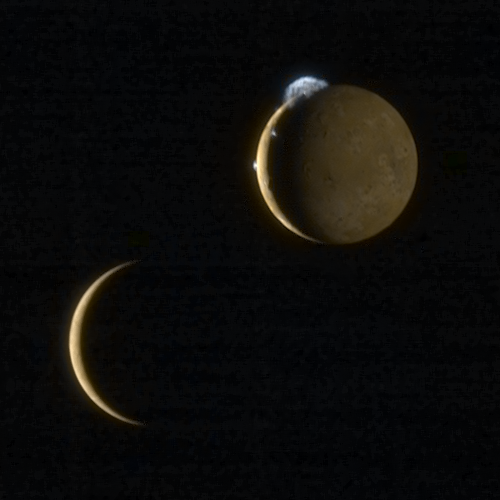
I count at least 4 if not 5 active eruption on Io in this version. The level of detail improvement from the same encounter is amazing. Old missions keep getting newer.
50 Years of Space Exploration Map
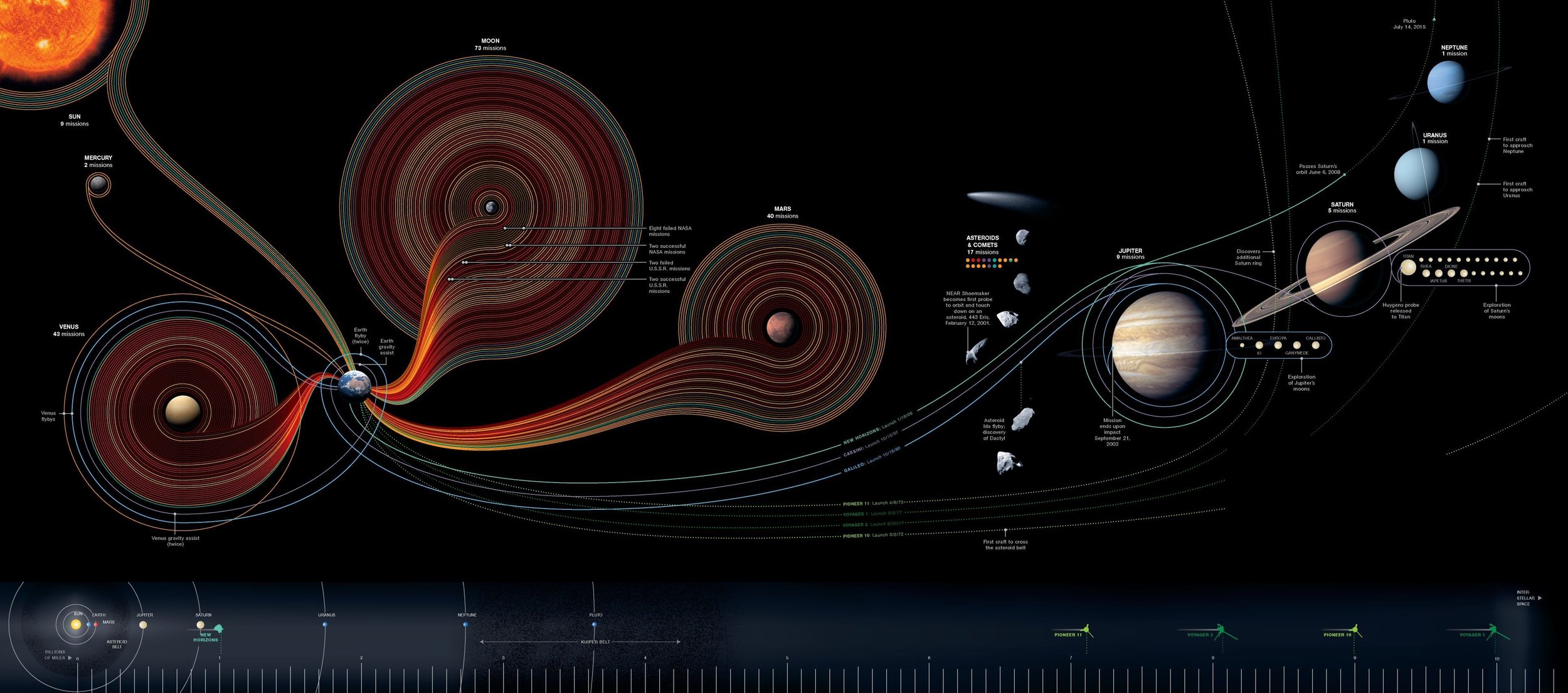 This is so nice, but I am furious that I didn’t get to design this. This is Information design at it’s best naturally by National Geographic. You can see 50 years of robotic planetary exploration at a glance. It even includes failed missions represented by darker desaturated lines. As far as I can tell the cream colored lines are US and the red ones are Soviet. Interesting to see how many of those lines go dark around Mars.
This is so nice, but I am furious that I didn’t get to design this. This is Information design at it’s best naturally by National Geographic. You can see 50 years of robotic planetary exploration at a glance. It even includes failed missions represented by darker desaturated lines. As far as I can tell the cream colored lines are US and the red ones are Soviet. Interesting to see how many of those lines go dark around Mars.
Now where does one purchase such a thing? Perhaps this month’s issue of NG? Here is the link to it on their site complete with zoom viewer and them some kind samaritan posted a hires version to flickr.
Galilean Family Portrait
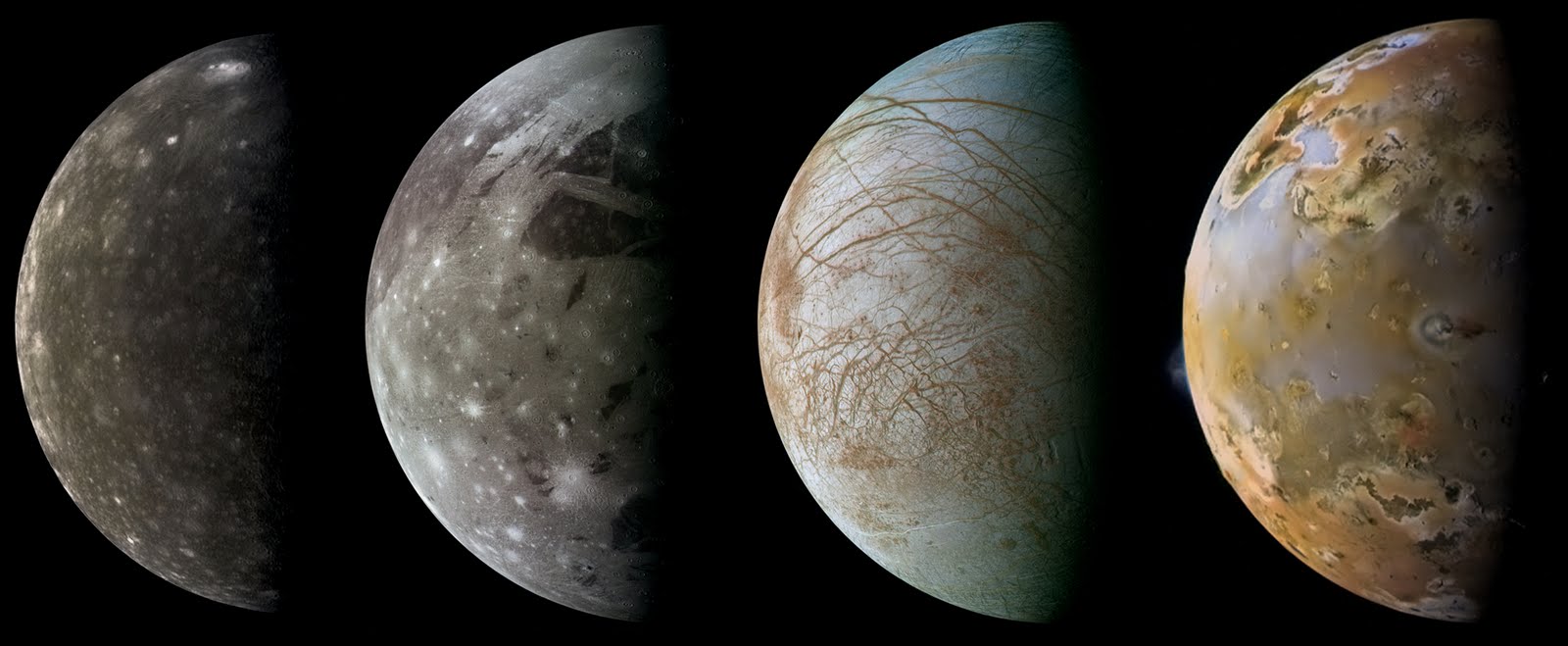 I usually do not go for montages of planets for a variety of reasons, but this family portrait of the 4 Galilean moons of Jupiter is quite gorgeous. They are easily the most fascinating and beautiful bodies of our system of worlds, save for perhaps Saturn and its rings.
I usually do not go for montages of planets for a variety of reasons, but this family portrait of the 4 Galilean moons of Jupiter is quite gorgeous. They are easily the most fascinating and beautiful bodies of our system of worlds, save for perhaps Saturn and its rings.
Another work of art by Ted Stryk whose old blog Planetary Images from Then and Now has come back from the dead with vigor!
iPhone Skins Featured on feulyourcreativity.com
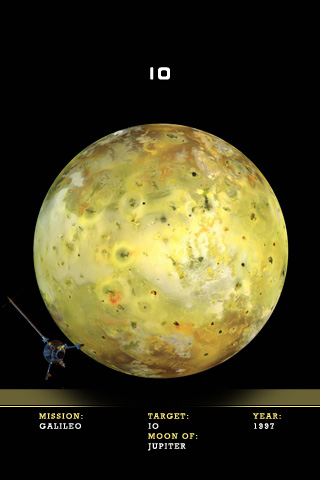 Not to re-post old material, but our iPhone planetary skins were recently posted to fuelyourcreativity.com for free download. So I thought I would just remind everyone and maybe direct a little traffic love their way.
Not to re-post old material, but our iPhone planetary skins were recently posted to fuelyourcreativity.com for free download. So I thought I would just remind everyone and maybe direct a little traffic love their way.
Friend a Moon on Facebook
 It is true. You can become friends with all the best moons on Facebook these days. Who wouldn’t want to get closer to Io. Maybe get to know better Jupiter’s moon Europa. Maybe you live in the same Solar System as Enceladus?!
It is true. You can become friends with all the best moons on Facebook these days. Who wouldn’t want to get closer to Io. Maybe get to know better Jupiter’s moon Europa. Maybe you live in the same Solar System as Enceladus?!
Outer Planets Mission Selected
 It is final. NASA (and ESA) have selected the next flagship mission to the outer planets. The target is the Jupiter system, and by “system” I do mean system. NASA’s side of things will concentrate on a Europa orbiter which will observe Jupiter’s moon in details that we have never seen before. See this youTube video for a good overview. The last time we were near Europa enough to make close observation was with Galileo, but problems with that spacecraft resulted in a limited amount of data that one would expect from such a long orbiter mission such as Galileo.
It is final. NASA (and ESA) have selected the next flagship mission to the outer planets. The target is the Jupiter system, and by “system” I do mean system. NASA’s side of things will concentrate on a Europa orbiter which will observe Jupiter’s moon in details that we have never seen before. See this youTube video for a good overview. The last time we were near Europa enough to make close observation was with Galileo, but problems with that spacecraft resulted in a limited amount of data that one would expect from such a long orbiter mission such as Galileo.
Beyond Europa, the mission will also be close enough to do great observations of its closest neighbor, Io, as well – of course – as it’s host planet Jupiter. Also worth noting is the possible adoption of an Io specific orbiter as part of the New Horizons class of spacecraft whose targets for the next decade have yet to be determined.
Lastly, and certainly not at all a small thing… ESA will be running a Ganymede orbiter to work in tandem with the Europa mission. The two missions are more like partner missions such as the 2 Mars rovers than separate ones. They seem to planning for them both to arrive at the same time (or even launched from the same rocket, is that even possible?).
For those unfamiliar with these bodies, check out these links to other posts about Europa and Ganymede.
Moons of Jupiter on Your Desk
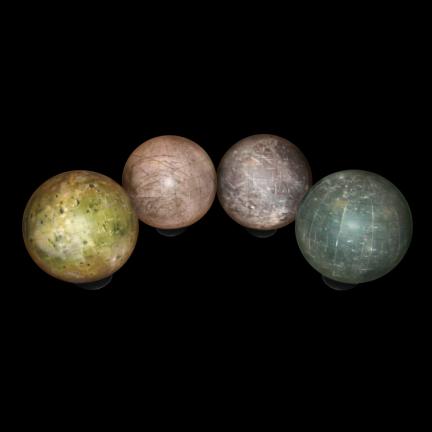 Download this pdf to check out these soon to be produced desktop globes of Jupiter’s moons and contact them about any interest in buying them here. These are cardboard-substrate globes on simple plastic bases, but they still look pretty cool. Even at the high price of $300 (a pre-production estimate) – I have to say that I am pretty tempted.
Download this pdf to check out these soon to be produced desktop globes of Jupiter’s moons and contact them about any interest in buying them here. These are cardboard-substrate globes on simple plastic bases, but they still look pretty cool. Even at the high price of $300 (a pre-production estimate) – I have to say that I am pretty tempted.
The iPhone Set 01: Bodies of Major Interest
 If I am going to keep making these things… I’d be a fool to not include a set for the Apple iPhone. Coincidentally, when you purchase your iPhone and do not yet have a phone service, the phone displays a full-disc image of the Earth pretty much displayed exactly as these do when uploaded to your iPhone. So in the spirit of continuity, you can now opt instead to have Mercury, Venus, Earth, The Moon (Luna), Mars, Jupiter, Io, Europa, Ganymede, Callisto, Saturn, Enceladus, Titan, Iapetus, Hyperion, Uranus, Miranda, Neptune or Triton grace your screen instead of the default Earth.
If I am going to keep making these things… I’d be a fool to not include a set for the Apple iPhone. Coincidentally, when you purchase your iPhone and do not yet have a phone service, the phone displays a full-disc image of the Earth pretty much displayed exactly as these do when uploaded to your iPhone. So in the spirit of continuity, you can now opt instead to have Mercury, Venus, Earth, The Moon (Luna), Mars, Jupiter, Io, Europa, Ganymede, Callisto, Saturn, Enceladus, Titan, Iapetus, Hyperion, Uranus, Miranda, Neptune or Triton grace your screen instead of the default Earth.
The easiest way to install wallpapers to your iPhone is to make a special set in iPhoto and simply drag all the files to that folder. Then in iTunes have your iPhone sync that folder to your photos collection. After that it is as simple as opening the “Photos” area of your iPhone. Go to your new folder of images and open whichever image you want. Then tap on the image just once and assign it as a wallpaper using the “Use as Wallpaper” button in the lower left corner of the screen.
If you have a PC I have no idea in hell how the hell you get images into your iPhone. I would buy a Mac… you have an iPhone and use iTunes… you are half-way there.
For a version of these with no graphics see this link.
2560 x 1600 Set 02 : The Moons of Jupiter
The moons of Jupiter (well, the 4 major ones) are in their own right, a Solar System within a Solar System. There is volcanically explosive Io; Europa with its cracks and ridges hinting at its huge internal ocean; Ganymede the largest moon in our celestial neighborhood and Callisto one the most heavily cratered bodies we have anywhere. The 4 moons are also called the Galilean moons as they were discovered by Galileo and have since been revealed to be more fascinating than most planets are. The images below represent what I think are likely the best representative images of these places that can fill a 2560x1600 screen. At this size, the details are quite impressive… do take a look even if you can’t make use of the images as wallpaper images.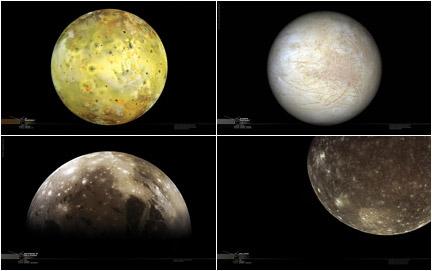
The Europa image is actually a render created by Tayfun Öner as not that many satisfactory images exist of a full globe Europa. Many great images exist of Ganymede but most are low resolutions, this image was stitched together by Ted Stryk of www.unmannedspaceflight.com. The other two are officially released NASA composites.
Wallpapers: 1024x768 Set 05
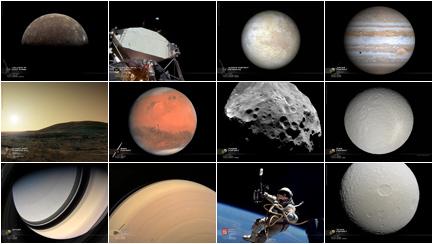 Managed to make the more common wallpaper size 1024x768 for the 14 most recent wallpaper posts (started with set 05 images, 1-4 to come). Download zip file here. Some were not produced as they just didn’t translate so easily into the format. However, the opposite is true in some cases such as for this image of the Martian south pole. Its resolution was hopelessly low for the larger landscape format, so now with the smaller size it was possible (just barely) to get it posted as a wallpaper.
Managed to make the more common wallpaper size 1024x768 for the 14 most recent wallpaper posts (started with set 05 images, 1-4 to come). Download zip file here. Some were not produced as they just didn’t translate so easily into the format. However, the opposite is true in some cases such as for this image of the Martian south pole. Its resolution was hopelessly low for the larger landscape format, so now with the smaller size it was possible (just barely) to get it posted as a wallpaper.
Included in the set for download are the images pictured at the top and for the sake of google search, here they are listed out:
- 1024x768 Wallpaper of CALLISTO at half view, moon of JUPITER
- 1024x768 Wallpaper of EARTH from APOLLO landing site
- 1024x768 Wallpaper portrait of EUROPA, moon of JUPITER
- 1024x768 Wallpaper portrait of JUPITER
- 1024x768 Wallpaper of MARS region of DEUTERONILUS (not shown)
- 1024x768 Wallpaper of MARS surface at HUSBAND HILL
- 1024x768 Wallpaper portrait of MARS
- 1024x768 Wallpaper portrait of PHOEBE, moon of SATURN
- 1024x768 Wallpaper portrait of RHEA, moon of SATURN
- 1024x768 Wallpaper of SATURN, crescent view (not shown)
- 1024x768 Wallpaper of SATURN from above the NORTHERN POLE
- 1024x768 Wallpaper of SATURN globe
- 1024x768 Wallpaper of SPACE WALK
- 1024x768 Wallpaper portrait of TETHYS, moon of SATURN
Io Plume and Europa Rises
New Horizons Spies Io and Europa… Together
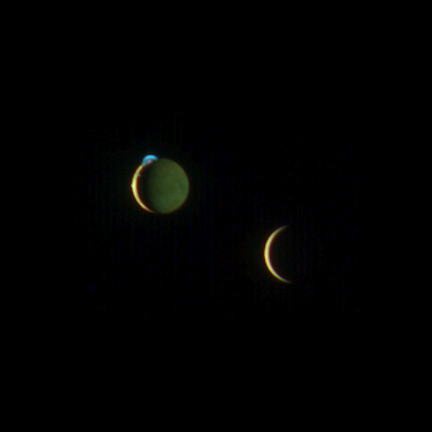
New Horizons has some sensitive vision for its investigation of the Pluto system. Because there is so little light at Pluto (comparitively), when looking back at Io and Europa it was able to capture this image with what looks like a considerable amount of “jupitershine” reflecting off of Io. Normally this kind of reflection is quite subtle. Furthermore, the reason Europa has no “jupitershine” is because it is closer to New Horizons on the dark side of Jupiter and Io is further away on the sunlit side of Jupiter… therefore capturing some light bouncing off the cloud tops.
Yes, the blue thing on Io is a volcano.
New Horizons Spies Ganymede and Europa
Wallpaper: Europa Portrait Render
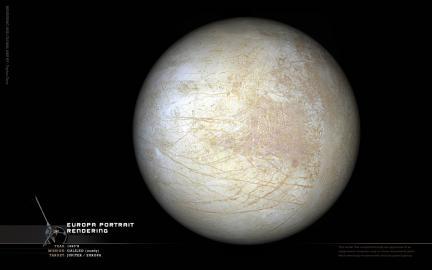 The previous Europa portrait posted here, is the most commonly seen image of the full globe of Europa. Even though there have been multiple missions to Jupiter and its system of moons (including an orbiter which stuck around for quite a while)… there are surprisingly few full globe images of Europa. The one used in the previous post mentioned was compiled through several filters but due to some incomplete data, an artificial green haze appears at the right edge of the disc. Considering the scientific importance of Europa and its unique appearance makes a full globe view of this world highly desirable in my mind.
The previous Europa portrait posted here, is the most commonly seen image of the full globe of Europa. Even though there have been multiple missions to Jupiter and its system of moons (including an orbiter which stuck around for quite a while)… there are surprisingly few full globe images of Europa. The one used in the previous post mentioned was compiled through several filters but due to some incomplete data, an artificial green haze appears at the right edge of the disc. Considering the scientific importance of Europa and its unique appearance makes a full globe view of this world highly desirable in my mind.
Enter Tayfun Öner who is the author of the above render. This model was created by stitching together a map of the Europan surface from a multitude of images. At this point in history, a good amount of Europa has been photographed and allows one to make an almost complete surface map as seen below. The clearest and best resolved regions of the map are likely from the Galileo mission and where gaps appeared from that mission the spaces were filled in with images taken by Voyager. 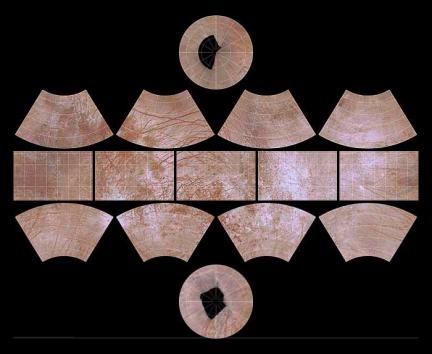 I usually prefer straight photography for the puposes of this site, but this is one of the most impressive renders I have ever seen of any body in the solar system. Seeing as how data sets for full global images of Europa are flawed at best… this render does the job most impressively. The full hi-res set of Europa maps by Tayfun can be found here for the curious.
I usually prefer straight photography for the puposes of this site, but this is one of the most impressive renders I have ever seen of any body in the solar system. Seeing as how data sets for full global images of Europa are flawed at best… this render does the job most impressively. The full hi-res set of Europa maps by Tayfun can be found here for the curious.

